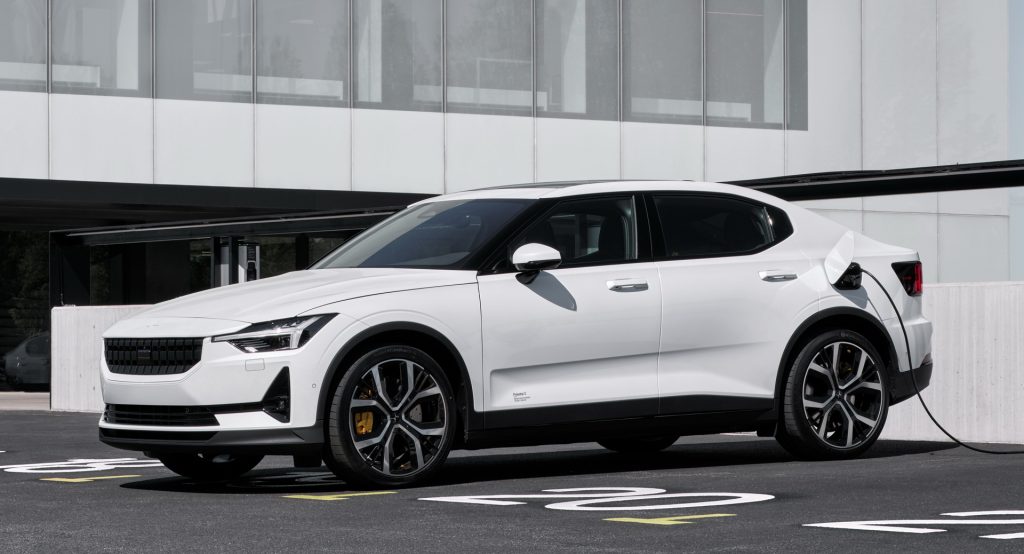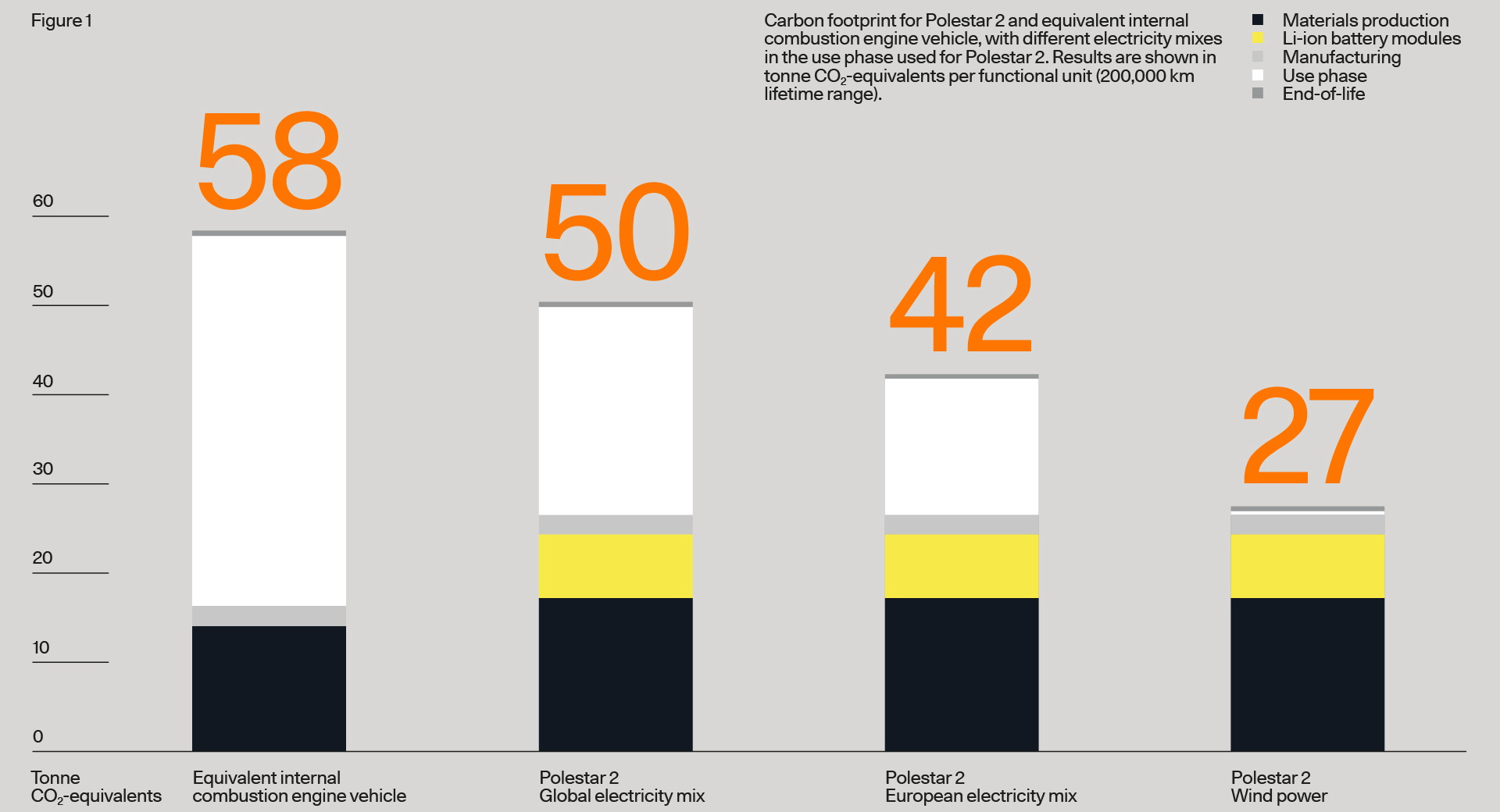Volvo’s performance electric brand, Polestar, has decided to publish full details about the climate impact of its models in a bid to become the most transparent carmaker in the world.
By providing us with their calculations, we can see just how environmentally-friendly (or not) a Polestar 2 is over its entire life cycle. This is a bold move for a carmaker, given the current state of the industry.
“Car manufacturers have not been clear in the past with consumers on the environmental impact of their products,” says Polestar CEO, Thomas Ingenlath. “That’s not good enough. We need to be honest, even if it makes for uncomfortable reading.”
Related: Volvo’s Sales Of Plug-In Hybrids Have Soared By 80% This Year
So just how eco-friendly is the Polestar 2 EV? Well, it leaves the factory with a 26-tonne carbon footprint, which is more than you’d get on a Volvo XC40 with an internal combustion engine – this is mainly due to the energy-intensive battery production process.
Once the vehicle reaches the customer, further damage to the environment becomes negligible, says Polestar, and after driving it for 50,000 km (31,000 miles), it becomes more environmentally-friendly than the internal combustion engine model as far as total greenhouse gases go.
With various car brands using different calculations for Life Cycle Assessments, the Swedish brand is proud to share its entire methodology, and you can read the full analysis for the Polestar 2 by clicking here.
“Fragmentation will only lead to confusion. Car manufacturers have to come together and be more transparent,” said Polestar exec Fredrika Klaren. “What we’re saying at Polestar is, as an industry, let’s help consumers make the right choice.”







